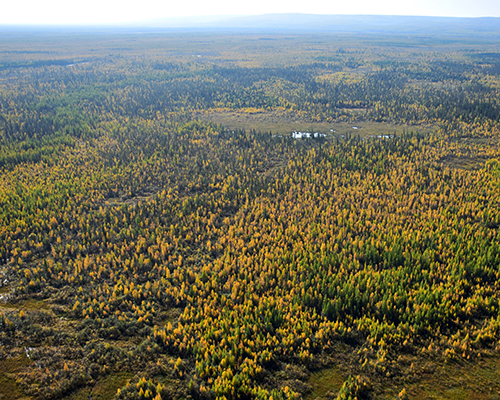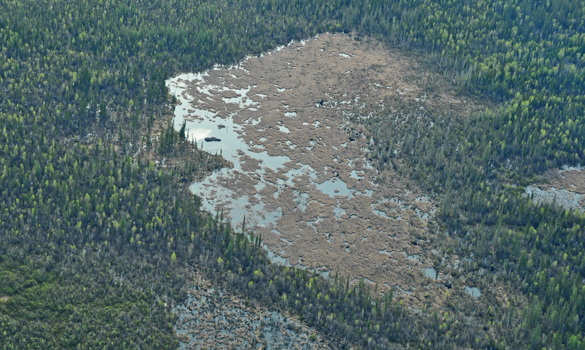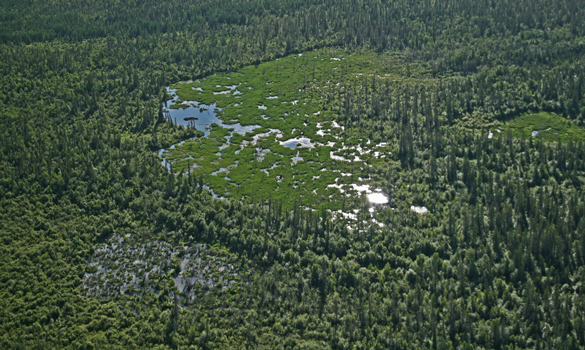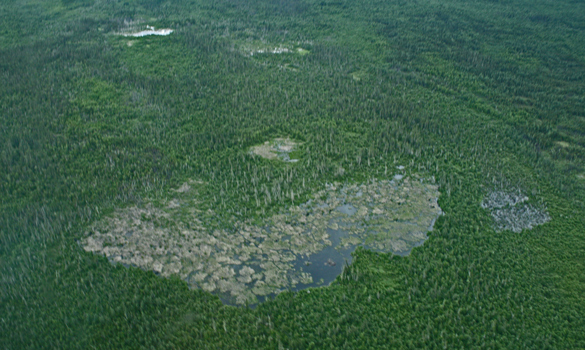World’s Largest Beaver Dam
Wood Buffalo National Park
Wood Buffalo National Park is the largest national park in Canada. It’s known for wood bison, whooping cranes, and for having one of the largest inland freshwater deltas in the world - the Peace-Athabasca Delta. It is also home to the largest beaver dam in the world.
Where is it?
The world’s largest beaver dam is in the middle of the park - far from any road or trail. To see it, you must either trek for days through tough landscape like wetlands, muskeg and thick boreal forest, or charter a private sightseeing tour.

How big is it?
The world’s largest beaver dam is visible from space in satellite images. It is almost 800 metres long from end-to-end, and holds back run-off water from the Birch Mountains in the southernmost end of Wood Buffalo National Park.
- The front of the actual dam, runs approximately 775 metres in length. The entire perimeter of the dam area is close to 2000 metres.
- The surface area is approximately 70,000 square metres.
- The pond formed by the dam is probably one metre deep, which means it would contain about 70,000 cubic metres of water
Comparisons
- The front end of the dam is about the length of seven football fields.
- A dump truck can carry about 10 cubic yards, so the beaver dam is holding approx. 92,000 dump trucks of water.
- If we thought in terms of hockey rinks, that’s 1600 hockey rinks of water.
For Kids! DYK: the WLBD is Parka’s home?
Parks Canada’s beloved mascot, Parka, comes from this very pond in Wood Buffalo National Park! Check out her story and all her adventures here! https://www.pc.gc.ca/en/serapprocher-connect/parka
Check out these FREE colouring sheets: printable as a PDF.
More about the role beavers play in watershed management? https://www.rockies.ca/beavers/
- Date modified :
























